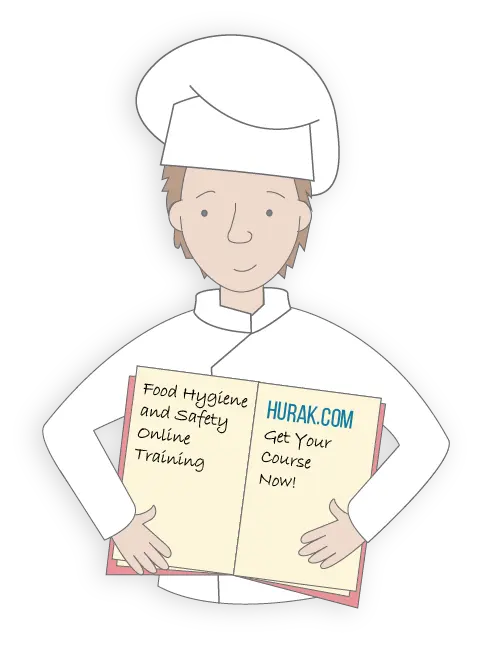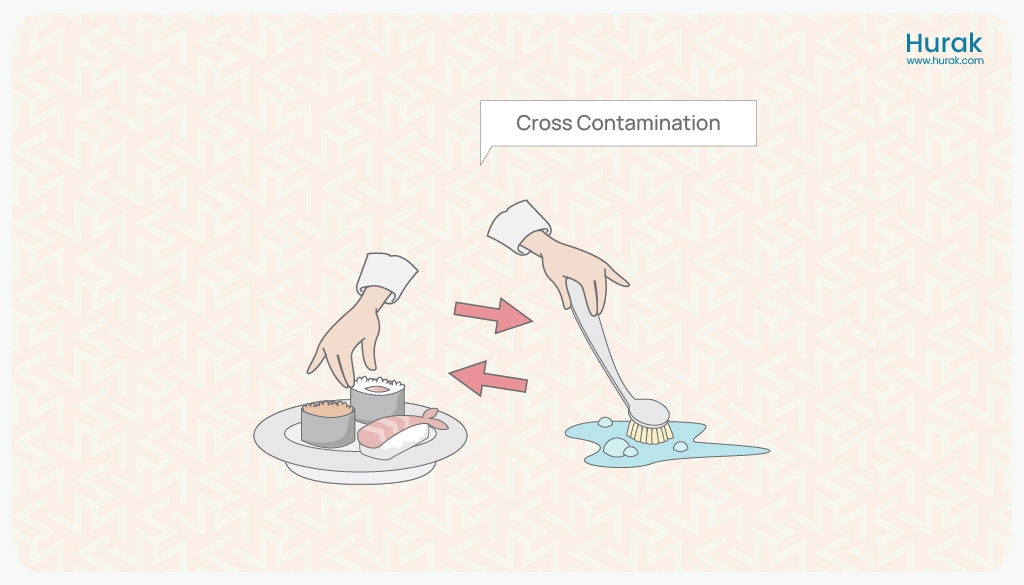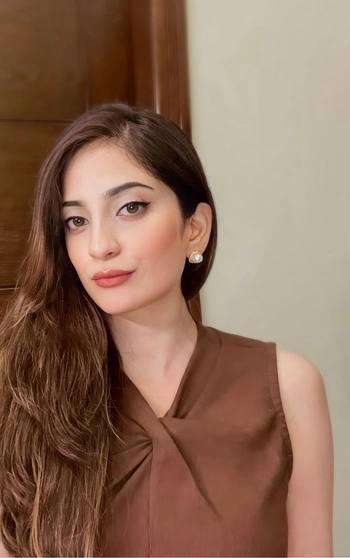The transfer of contaminants to food from another food source or an unhygienic environment is called cross-contamination in food. Improper food handling based on unhygienic and unsafe practices is the cause of cross-contamination. Food can be protected from cross-contamination using separate storage and equipment, contaminant analysis and food safety practices.
What is Cross-Contamination in Food
Cross-contaminated food is food that has come in contact with microbial, chemical, or solid pollutants. It can be from contaminated food, equipment or environment during any stage of the food production process.
Cross-contamination can also occur due to pollutants carried over from raw food to packaged food during improper food handling and storage. For example, the transfer of bacteria from one food to another can occur by sharing the same unwashed plate on which contaminated food was kept.
How To Avoid Cross-Contamination in Food
Proper Storage of Food
Proper storage of food can prevent cross-contamination if:
- Stored in the fridge at below 5°C
- Stored in the freezer at -18°C
- Stored in sealed containers
- Stored in separate storage sections, for example, raw meat stored separately on the bottom shelf of the refrigerator, away from pre-packaged products.
Contamination Control Method: HACCP
The HACCP system is the primary preventive approach to protect food from cross-contamination.
Separate Crockery for Different Food Types
Unclean crockery can carry microbes from one food source to another, cross-contaminating the latter. It is important to use separate tools for different food types to avoid inter-mixing of ingredients. After each use, all utensils must be washed and cleaned to reduce the risks of cross-contamination of food.
Food Safety Measures
The United Kingdom’s food authority, the Food Standards Agency, encourages the food industry’s working staff and owners to follow legal guidelines on Food Safety and Hygiene Practices. Certain food safety obligations are enclosed in the following food safety laws:
- Food Standards Act 1999
- Food Safety Act 1990
- General Food Law
- The Food Standard Order 1991
- Food Information Regulation
Food Hygiene Measures
Key measures for maintaining food hygiene include the following:
- Standard hygiene of food-handlers
- Clean equipment and facility
- Pest control measures
- Antimicrobial sanitation
Get Online Food Safety Courses
Food Hygiene And Safety
Check the CourseRated Excellent
on major review sites

4 Routes of Cross-Contamination in Food
The four common ways through which food can become cross-contaminated are through coming in contact with chemical, microbial, physical and allergenic contaminants.
- Chemical contaminants from cleaning agents or pesticides
- Microbial or biological contaminants such as Salmonella and Campylobacter, due to unhygienic food-handling
- Physical contaminants due to equipment malfunction during processing and packaging
- Allergenic contaminants due to unidentified allergens such as peanuts and gluten

Types of Cross-Contamination in Food
Three common examples of cross-contamination in food occur through food to food, equipment to food and people to food interaction.
Food to Food Cross-Contamination
- Raw meat drippings stored on the top shelf of a freezer come in contact with a cooked steak stored on the same shelf or on the one below it.
- Open food coming in contact with canned food
Equipment to Food Cross-Contamination
- Storing food in an unclean container
- Handling different foods using unwashed knives and cutting boards
Person to Food Cross-Contamination
- Using dirty gloves for handling food
- Touching food without washing hands
- Using unclean apron to wipe hands while handling food

Consequences of Cross-Contaminated Food
Food poisoning and financial loss to food businesses are two of the major negative consequences of cross-contaminated food.
Food Poisoning
Food poisoning can occur due to accidental cross-contamination between microbial sources and food items. Pathogens such as salmonella, E.Coli and campylobacter can lead to nausea, diarrhea and gastric complications in individuals who consume cross-contaminated food.
Economic Decline of Food Businesses
The food industry in the UK is strictly regulated. A slight negligence can damage the brand’s reputation and financial gains. The food safety laws mentioned above must be given serious attention by junior-level staff and supervisors alike, to avoid contamination-related mishaps.
Direct and Indirect Cross-Contamination
Direct cross-contamination takes place between raw food and pre-packaged food during preparation, storage and packaging. Indirect cross-contamination in food occurs through unhygienic food handlers, unclean surfaces on which food is being handled and unsanitized equipment. Indirect cross-contamination can also occur when the same crockery or utensils are used for different food types, such as meat and vegetables.
Conclusion
The transfer of contaminants to food from another food source or an unhygienic environment refers to cross-contamination in food. Proper storage and handling of food and the HACCP system are practices that confirm the protection of food from cross-contamination. The four common ways through which food can become cross-contaminated are by coming in contact with chemical, microbial, physical, and allergenic contaminants. Three common examples of cross-contamination in food occur through food-food, equipment-food and people-food interaction. Food poisoning and financial loss to food businesses are two of the major negative consequences of cross-contaminated food.




